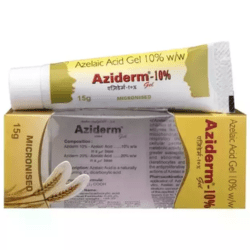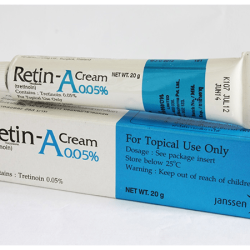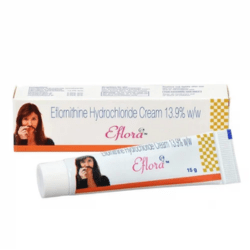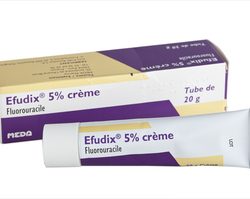Description
Uses of medication: Azelaic acid cream is indicated for the topical treatment of the mild-to-moderate acne, both comedonal acne and inflammatory acne. Azelaic acid is also recommended as a topical gel treatment for the rosacea, due to its ability in order to reduce the inflammation. Azelaic acid is also useful in the treatment of skin pigmentation including melasma and postinflammatory hyperpigmentation, specifically in those who are with darker skin types. Azelaic also can be recommended as an alternative to hydroquinone. In the form of a tyrosinase inhibitor, this drug reduces the synthesis of the melanin.
Dosage: Once the skin thoroughly washed and patted dry, azelaic acid cream should be very gently but thoroughly massaged twice daily, in the morning and evening into the affected areas. The hands must be properly washed after the application. The duration of the use of azelaic acid may vary from person to person and depends on the severity of the acne.
Treatment reactions: The reported adverse reactions were generally mild as well as transient in the nature:
- Pruritus
- Burning
- Stinging
- Tingling
Other reported adverse reactions such as:
- Erythema
- Dryness
- Rash
- Peeling
- Irritation
- Dermatitis
- Contact dermatitis
Warnings and Precautions:
- Azelaic acid is contraindicated in those individuals who have shown hypersensitivity to any of its components.
- If sensitivity or severe irritation occurs with the use of this drug, treatment must be discontinued and appropriate therapy instituted.
- Patients should be told in order to avoid the use of the occlusive dressings or wrappings.
- Safety as effectiveness in the pediatric patients who are under 12 years of the age have not been established.
- Caution is required when azelaic acid cream is administered to the nursing mother.
- If troublesome irritation persists, use should be discontinued, and patients should talk to their physician.
- Due in part to the low pH of azelaic acid, pruritus, burning, stinging may occur when this drug is applied to the broken or inflamed skin, usually at the initiation of the treatment.




